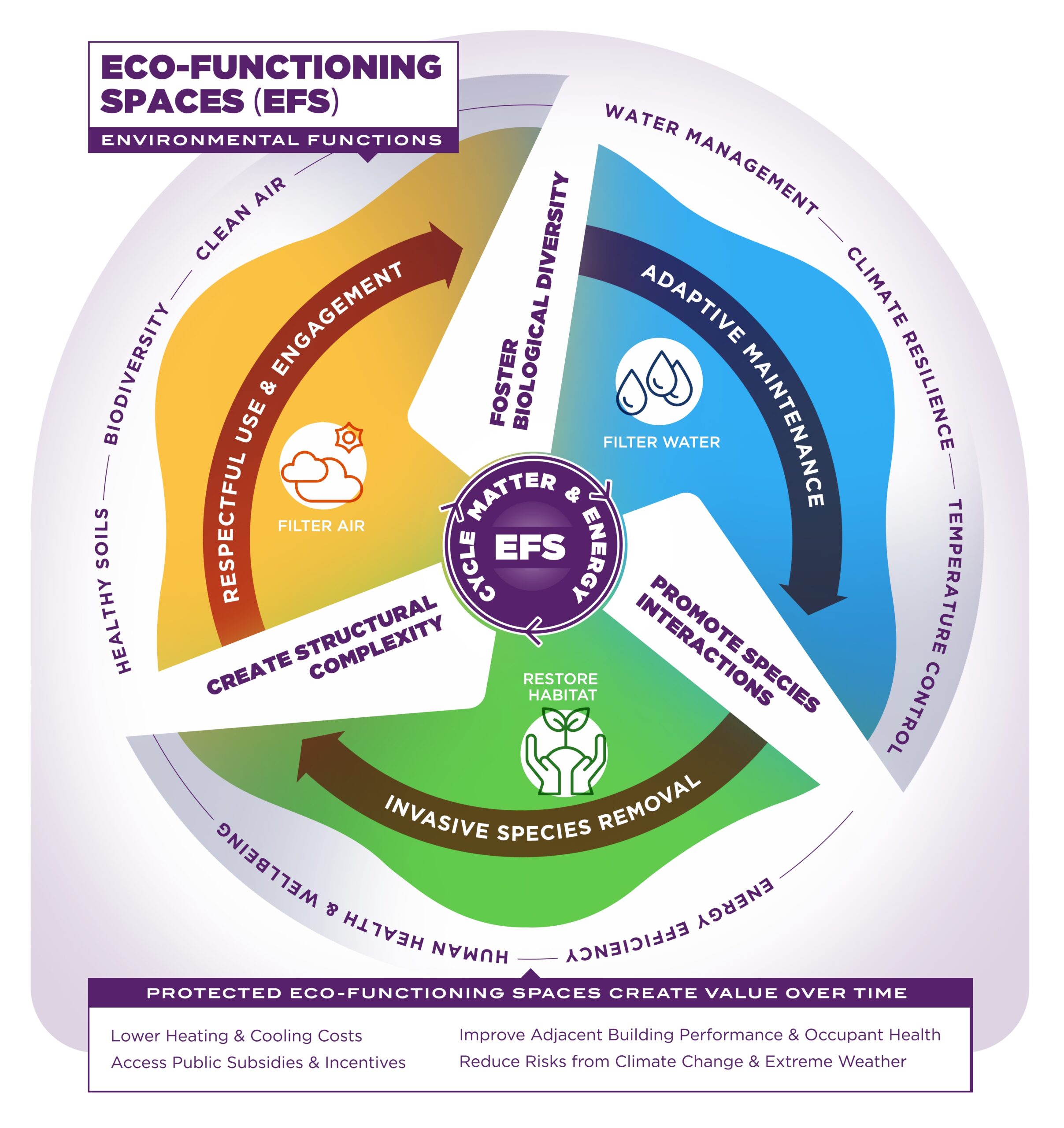Eco-Functioning Spaces

What are Eco-Functioning Spaces®?
Eco-Functioning Spaces® (EFS) are living systems that are specifically designed to use or replicate pre-existing ecosystems in sub/urban areas for the environmental, economic and social benefit of urban communities and to strengthen their surrounding ecosystems. Eco-Functioning Spaces, when designed and used as recommended, spin off valuable ecosystem services.
UER assists owners or maintenance personnel in creating, maintaining, and programming EFS in ways that intentionally produce and use valuable ecosystem services for on-site benefit and the benefit of nearby urban developments (whether commercial, residential, mixed-use, retail, or hospitality). UER helps owners create and link ecosystem benefits to sites in ways that add value and/or reduce costs for the site on which they are located, as well as the surrounding neighborhoods or urban districts in which they sit.
Understanding nature
How Do They Work?
Eco-Functioning Spaces may start out as existing natural areas (e.g. forests, forest fragments, wildflower meadows), or they may be created on previously built, impervious, or otherwise degraded areas. Either way, EFS restore the ecological relationships and biological requirements for healthy ecosystem function.
EFS always incorporate the key drivers and indicators of ecosystem health: biological diversity, high levels of species interactions (which require native species), structural and physical complexity, and opportunities for generational succession. Using these building blocks, EFS are designed so that they mature and expand over time, which strengthens their valuable ecological functions and delivers essential ecosystem services to those living in and around them.

What Do they Do?
When properly maintained, EFS produce environmental, economic, and social benefits for their owners, site users, and the surrounding communities. Every EFS’s ecological functions produce ecosystem services that are, at a minimum, those that human-beings need for survival, health, and wellness, and Eco-Functioning Spaces often reduce the need for costly gray infrastructure or similarly engineered alternatives. These ecosystem services are:
- Stormwater management/water retention & filtration (clean and recharge our water),
- Greenhouse gas sequestration and air filtration (clean our air),
- Decomposition/composting (reduce waste streams and restore nutrient cycling),
- The provision of native habitats that support naturally-occurring food webs (promote food production and allow for recovery of biodiversity), and
- Land and water temperature modulation that enables the growth of various native plant and animal communities (control temperature extremes and cool surrounding areas).
Eco-Functioning Spaces: What Specific Attributes and Performance Criteria Make a Space an Eco-Functioning Space?
Pilot metrics for Eco-Functioning Spaces and related requirements can be found by clicking below.
Working together to transform urban spaces into Eco-Functioning Spaces, and restoring these natural functions to the area around them: that’s how we make every square foot count.
